Here in our first winter aboard Barefoot Gal, we’ve done a lot of work to improve our energy situation:
- Replacing batteries (see my post about testing batteries)
- Changing to LED and solar lights wherever possible (see this, this, this, this and this article)
- Adding a battery monitor
- Adding a battery watering system
We also replaced the very small (1-1/2 amp) shore charger that was on the boat and got a Honda 2000 generator. Initially, we used the Honda for almost all our charging needs unless we were motoring anyways, but we knew that our goal was to upgrade our solar changing so that we’d only rarely need the Honda.
I’ve written in the past about how solar is extremely cost effective for a boat, as well as silent and virtually maintenance-free. It’s even more true now, as panel cost has decreased while efficiency of both panels and charge controllers has significantly increased.
Barefoot Gal had 106 watts of solar power on her when we bought her, and a 16-year-old low tech charge controller. I knew that technology had moved forward considerably and we could do better, but I also knew that this is one area where we really needed advice from an expert. I can tell you what we got and how we chose our expert, but I cannot go into all the technical details as to why he thinks these are the best.
But I’ve had a number of questions about what did we get and why, so here goes . . .
When we arrived in Boot Key Harbor, Marathon, Florida, one of the first people we met was Alex Miller of SeaTek. In fact, he was the first person to diagnose our engine problem . . . but also said that a diesel rebuild wasn’t a project he wanted to undertake as his primary business was solar installations, refrigeration, and outboard repair. Hmm, solar installations??
As we got to know Alex and talked to other people here who had solar systems that Alex had designed, we discovered that he is an extremely knowledgeable young man who was putting together great solar systems for boats. Not only did he know “the state of the art,” he was putting together packages that were both robust and cost effective. We talked to many other cruisers who had used Alex to design their solar arrays, and heard nothing but good things.
Better yet — Alex was willing to have us do part of the work to keep our costs down. We could do the majority of the work on the mountings, do the long wiring run and mount the controller; he’d put the mounting brackets on the panels and make the actual electrical connections. Since it would take two people to lift the panels into position, Dave and Alex would do that part together.
Alex gave us three different panel options, depending on how much solar we wanted and advised us on where we could/should install it. One of our questions was whether we should add to our existing panels or simply start fresh — on his advice, we opted to start fresh since the new technology is so much better than our old panels and controller (16 years old and they weren’t state of the art then).
The tough decision was how much solar we wanted. We wanted to have more than we needed right now, as we currently have an old propane refrigerator and would like to switch to a DC system when we have to replace it. And we wanted to have enough that a few cloudy days wouldn’t be a problem, although we realized that with the Honda generator, we did have backup without resorting to running the diesel engine just to generate power.
We knew from our battery monitor that we were using 10 to 12 amp-hours overnight (lights, music, charging electronics), and another 12-ish to power the watermaker each day, plus some more to charge computers, phones and tool batteries during the day. So right now we were probably using 30 to 35 amp-hours a day just on a mooring or at anchor.
But how much would we use if we changed refrigeration, or when underway (and not motoring)? And what if we started running the watermaker a little longer when we didn’t have showers available ashore?
And how much power would the new panels put out in real world conditions? Alex could give us some general numbers but as he said, every installation is different with different shade patterns and different cruising areas.
Our previous boat had 453 watts and provided almost all our power, including a less efficient watermaker, a large 12-volt refrigerator in the heat of the summer, lots of fans and far less efficient lighting. We watched our energy usage but as long as we motored in/out of an anchorage once a week, we were fine with power.
That experience gave us a bit of a baseline. Alex was confident that the new technology in the panels he sold, combined with the MPPT controller he matched up, would outproduce what we’d bought in 2003 on our previous boat.
While Alex thought we could put 2 250-watt panels on our dinghy davits, we all agreed that it would take quite a bit of beefing up the existing structure. The single 345 or 250 watt panels looked a lot more reasonable. A 345-watt panel would measure 41″ x 61″; a 250 would be 31″ x 61″.
We went with a 345-watt panel from SunPower Technology and a Midnite Solar “Kid” MPPT controller (controllers have to be matched to panels in size). I cannot tell you all the technical details about why Alex likes these particular ones, other than they are very robust and highly efficient. They are higher voltage than conventional solar panels (almost 60 volts vs. 17-ish), but have to be matched to the correct controller in order to get the full benefit of them.
The panel cost $690 and the controller $300. We had 35 feet of 10/2 boat cable ($50); the extra stainless fittings, tubing and welding on the dinghy davits cost $250 (this included adding some diagonal bracing to make them stronger for the panel); the materials for Alex’s mounts cost $100; and two hours of Alex’s time came to $140. So the total was just over $1500. As most people discover, the costs of mounting the panels can add up quickly and are the “hidden cost” of adding solar. We sold our old panels and controller for $100.
The result? We’ve had the new panel for a month now and love it. Most days, our batteries are at float stage by 11 AM, often by 10 AM. That’s with running the watermaker first thing in the morning. The most power we’ve seen the panels produce is just over 20 amps and that was the afternoon they were first installed — the batteries have literally never been far enough down since then to take all the power that the panels could produce. We are positive that we will have no power problems when we convert our refrigerator to DC.
UPDATE 12/4/16: We’ve now had the panel a year and a half. We’ve installed a new refrigerator that runs on DC. We are also using our DC watermaker daily. Most days we are able to fully charge our batteries by mid to late afternoon. A single day of clouds isn’t a problem; we’re able to catch up the next day. Several days of cloudiness — or when the wind blows from just the right direction that the mast shades the panels for several hours — mean that we may have to either run the generator or forego making water for a day. We haven’t tracked it exactly, but we’re probably running the generator once every 2 to 3 weeks; during our entire summer in the Bahamas, we ran it only once.
Bottom line: we’re exceptionally happy!
FURTHER UPDATE: Alex has gone cruising and no longer has a business in Boot Key Harbor. However, the guys at Onboard Rigging have taken over his business. We have not used their services, but people who have are very satisfied.

Carolyn Shearlock has lived aboard full-time for 17 years, splitting her time between a Tayana 37 monohull and a Gemini 105 catamaran. She’s cruised over 14,000 miles, from Pacific Mexico and Central America to Florida and the Bahamas, gaining firsthand experience with the joys and challenges of life on the water.
Through The Boat Galley, Carolyn has helped thousands of people explore, prepare for, and enjoy life afloat. She shares her expertise as an instructor at Cruisers University, in leading boating publications, and through her bestselling book, The Boat Galley Cookbook. She is passionate about helping others embark on their liveaboard journey—making life on the water simpler, safer, and more enjoyable.
Your VHF can do so much! Learn how to use ALL its features for just $39:
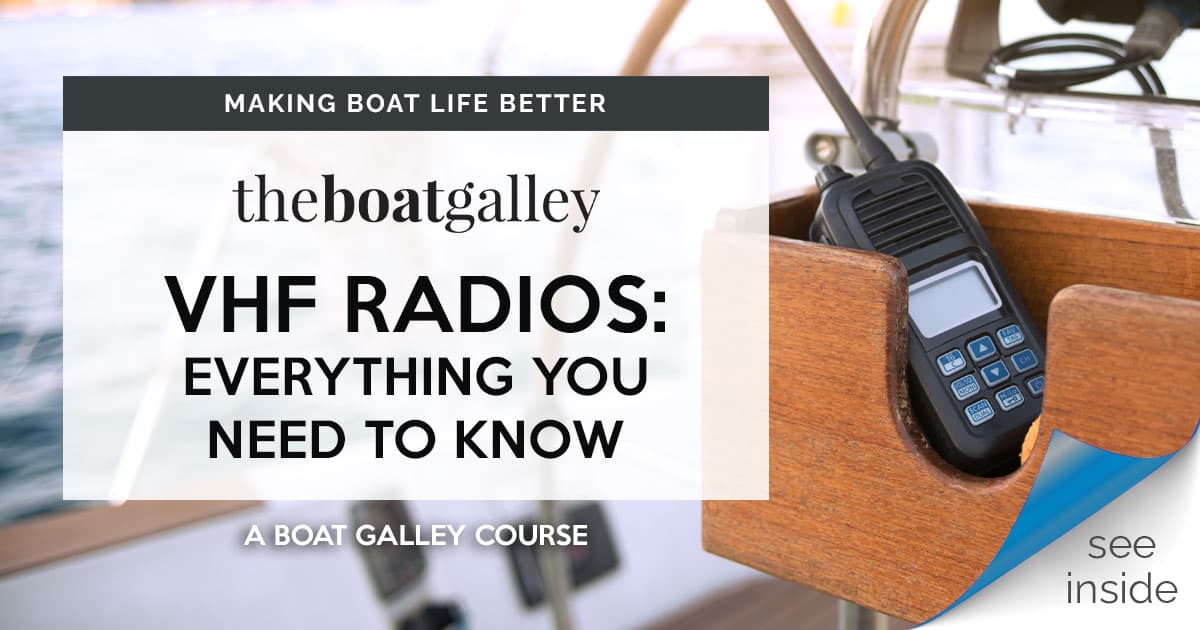
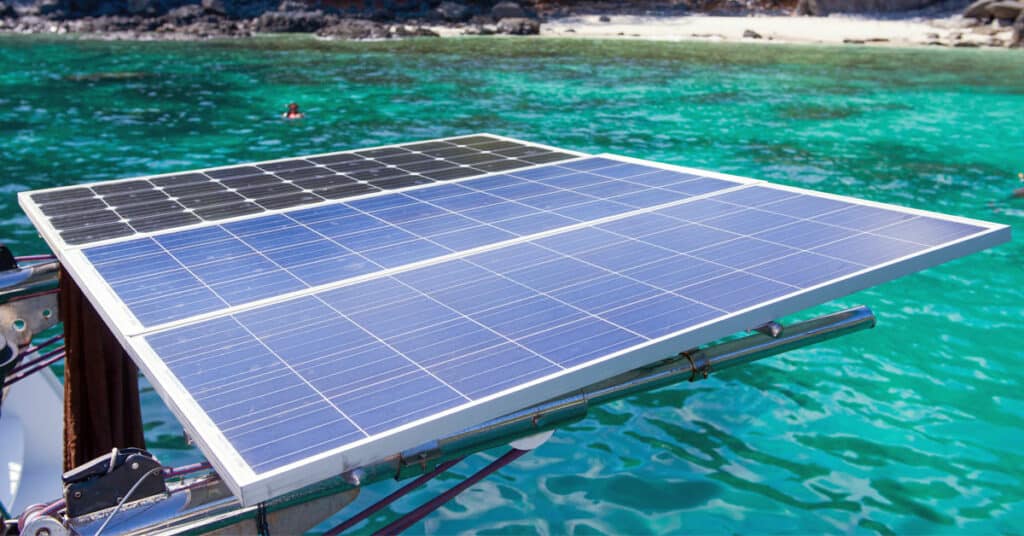
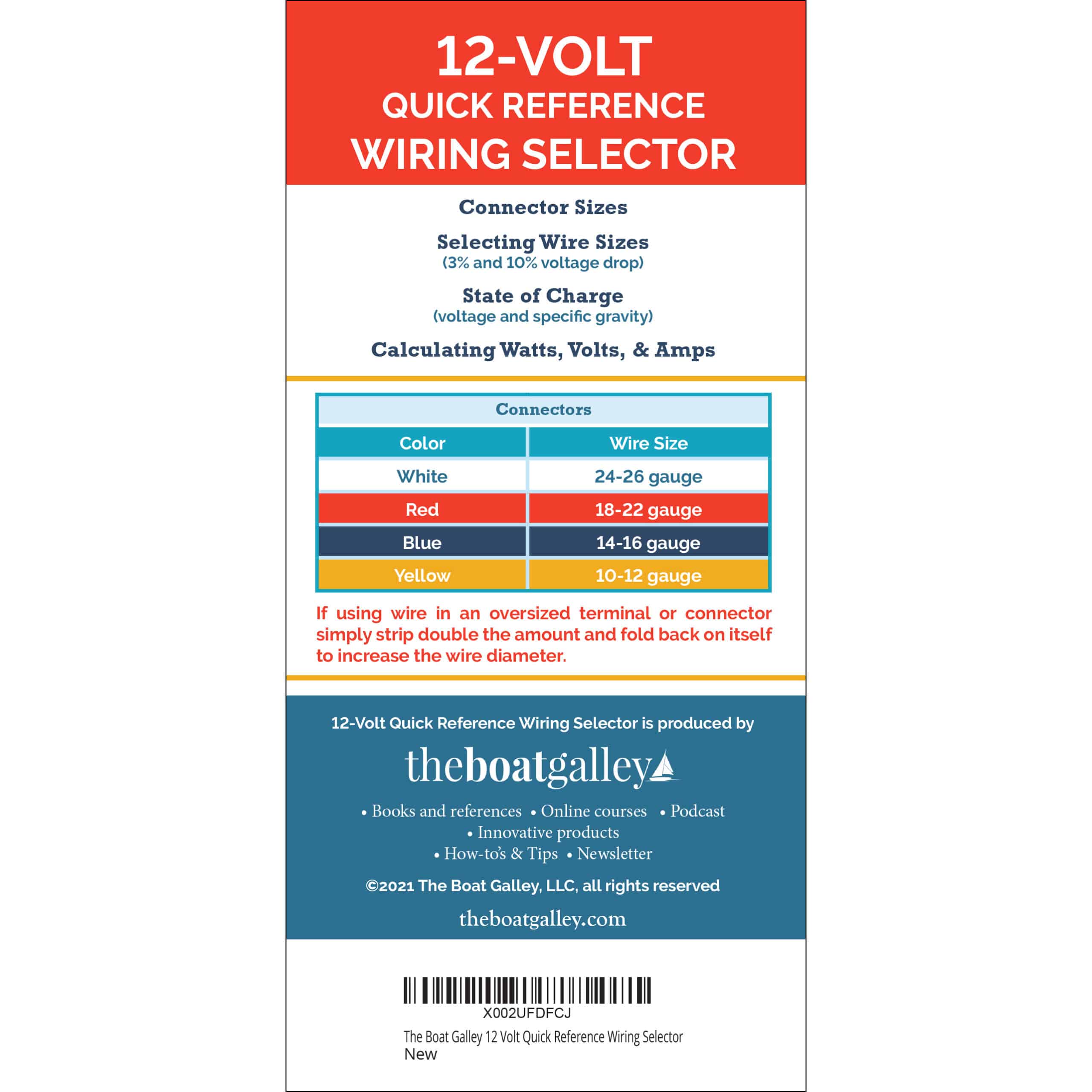
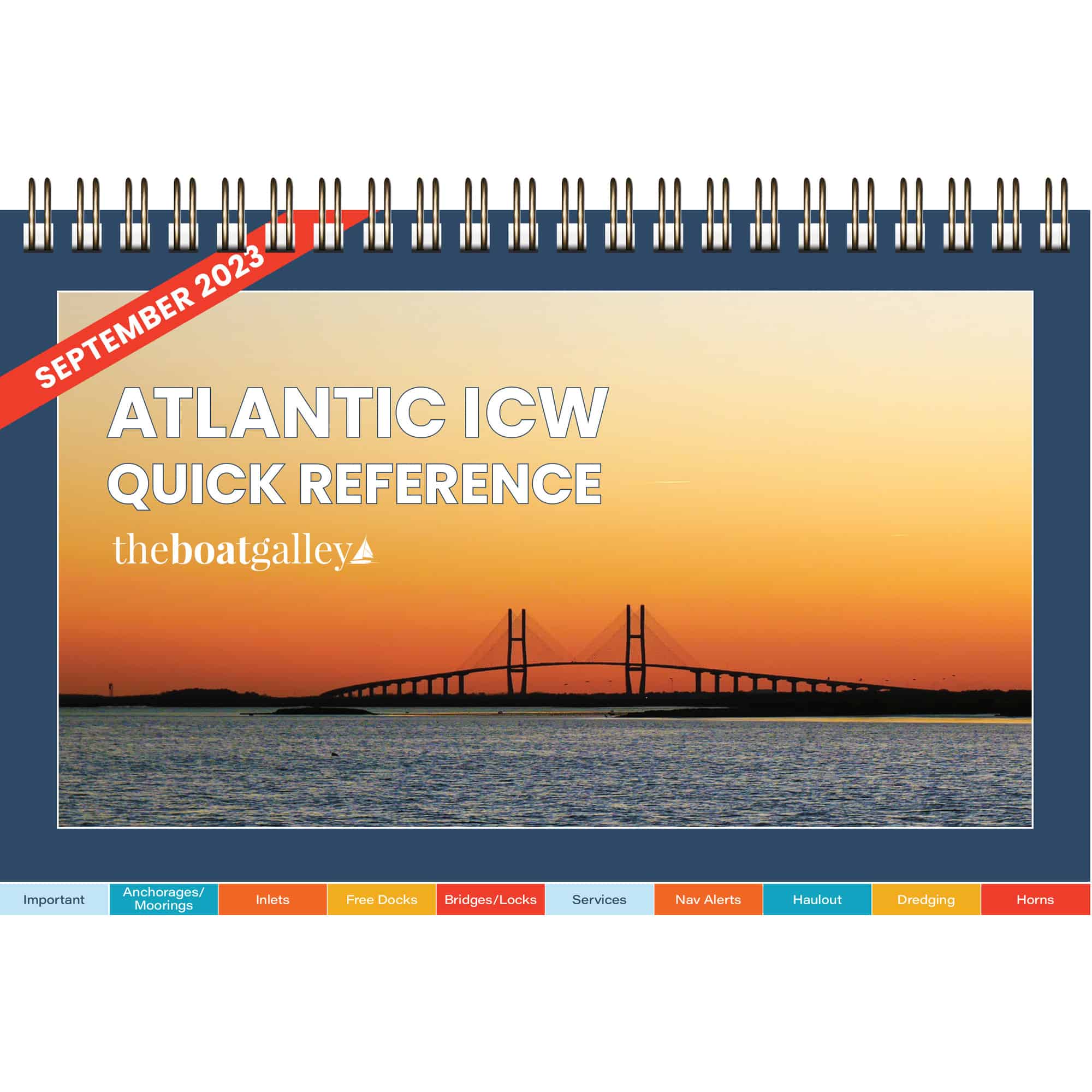

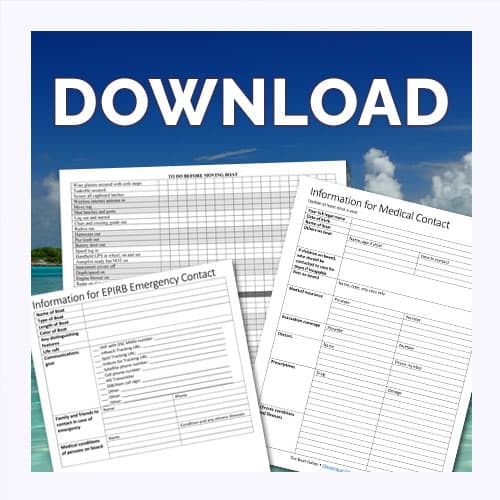



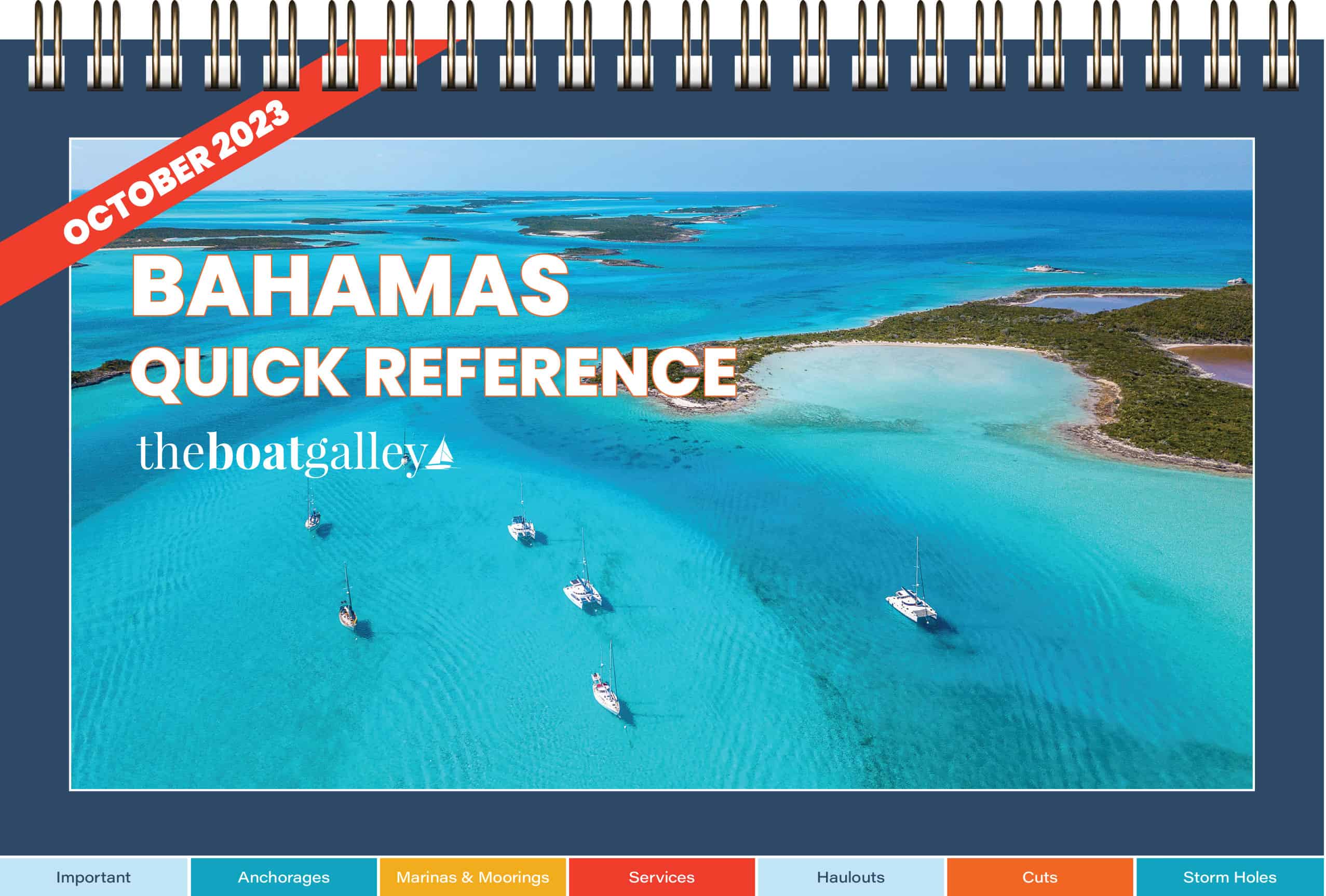

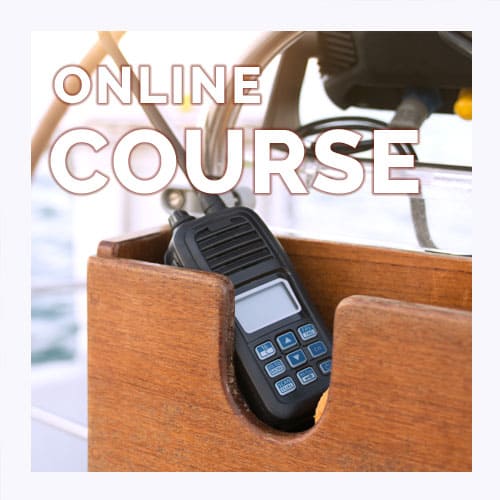
Nikki Dowden says
We have just had to buy 8 new batteries
Mike McCollough says
I believe in having two panels, to remove the single point failure issue. The major issues with panels I have found is the voltage used to ship the energy to the controller and the real estate needed for placing the panels. I have a Pearson Triton that doesn’t provide much surface area. I had an arch built on the back of the Triton to place panels up high and aft of the mainsail. There is room up there to support two 35″x48” panels. I currently have two 50 watt panels as my needs are modest at this time. My major user is my Engels fridge/freezer at 4 amps. The other part of the solar system, and why you have one, is the where you store the power when the solar panels are not functioning, the batteries. The tricky question is what is the longest period of time you will not have solar power and how long will it take to return that power you consumed when you do have solar power. I am thinking of 72 hours with rationing after the first 36.
I am curious, what is the lifetime you expect with the non-marinized Honda generator?
Bill says
S/V Rhapsody has a small energy budget as well, and I too decided to go with two panels for redundancy. At least the odds of both of them failing hopefully is nil. I installed two 45W panels and I am beyond amazed at how fast the top off the batts. I am further amazed that even in overcast skies (not necessarily HEAVY clouds) the panels the panels continue to charge. On a sunny day, my batts are topped off by 0900ish… Best move I’ve made.
Fair Winds
Peter Simpson says
I live and work in the British Virgin Islands where it can get pretty warm. Alot of the production boats I maintain have very poor refrigeration systems. They either use a chest type refrigerator or a front opening 1/2 height fridge, poorly insulated, on a boat with 8 people almost constantly opening the door to get something. And then they complain because it is not cold enough. I built my chest type freezer/fridge with 6″ of insulation in the bottom, 5″ in the sides and 4 in the top. Being in the tropics I have to defrost the unit once every week or so. The freezer side goes to 19 degrees and if I have zero power to the freezer/fridge it will go up 16 degrees in 24 hours. That saves a huge amount of generator or engine run time. Efficiency makes me smile.
Charles Badoian says
Alex Miller
George Sullivan says
We have the utmost respect for Alex Miller. He’s a very knowledgable, hardworking, and personable guy. A much appreciated member of the Marathon boating community.
Jane Overbeck says
Carolyn, these are great details on how you beefed up your on-board power. As for Alex, he is the best! He fixed our refrigerator this winter after others failed and installed a Trimetric power monitor. Next winter, he’ll install two of the larger solar panels on our boat because our power use is higher from having gone to the “dark side.” He studies boat systems, and as you found, his word and his work can be trusted.
Jane on m/v Rising Tide
Steve says
Good article but am curious what guarantee you have for the Sunpower Panels? My understanding is Sunpower won’t standby their normal warranty when installed on a boat. Was that the case here? Is your installer going to warranty your panels for 20 years? I agree they are the top tier panels out there but …
Steve
steven says
They more than likely will not own the panels for 20 years…
Honestly if you only get 10 years that’s only $70 peg year… So what’s the big deal?
Suky Cannon says
Hey Carolyn.. You are my go-to web site. I truly appreciate how you are so clear and easy to understand in all things ! Thank you !
Carolyn Shearlock says
Thanks!
Suky Cannon says
Carolyn. How many & what type of batteries do you have ?
Carolyn Shearlock says
We have three batteries in one bank. Two group 24 and one group 27. All Napa “Marine” batteries. We’d like a much larger bank with higher quality batteries, but these fit. So until we want to do some remodeling . . .
With wet-cell batteries, a watering system is worth its weight in gold:
https://theboatgalley.com/easy-battery-watering/
Kelly says
Carolyn, can you tell me the brand/kind of refrigeration system you are looking at that is more efficient power user?
I love your website and cookbook!
We are heading from New Orleans to Florida tonight to look at 2 boats! The house is almost ready to go on the market!! Thank you to you and your readers for all of the helpful comments.
Carolyn Shearlock says
We bought an Isotherm 130 last summer — it’s an upright; we’re on a cat. Isotherms, Engels and many other brands are SO much more efficient than units were 20+ years ago. And many brands now have drop in units which make them simple to install yourself. Here’s a link to how we decided on this one: https://theboatgalley.com/choosing-our-new-refrigerator/
Mike says
We have been using our solar system for a year now and love it. We went with 2 SolarWorld 315w panels and a Midnite Solar Classic charge controller. I like that I can monitor the charge from the boats network or if we are in port and have a internet connection I can monitor it from their website.
By the way we are here in your old sailing ground. We now understand how you fell in love with the La Paz area.
Mike & Lisa
s/v FatDash
Jorge Anchía says
Great info!!! Thanks
Andrea Clark says
Kevin Clark
Boni Rothmann says
How much do your new upgrade weigh approximately?
The Boat Galley says
The panel is 41 pounds.
Louis A. Feudi says
Saved
Richard Vaughn says
I will attest to the knowledge and integrity of Alex. Although we did not upgrade our solar Alex did help us out on a new battery charger and the wiring involved. All at very reasonable costs.
Tyler says
Great article. I found the solar charge controller upgrade can really help A LOT going from PWM to MPPT when you have over 300 watts in your array. Besides that, I don’t know if it is economical as it really doesn’t help too much. I plan on getting another panel soon so I think I will get a new MPPT controller.
Anonymous says
Nice system
Anonymous says
Mandi Pi
Anonymous says
Alex! The best there is!
Anonymous says
My phone said its a unsecured web site, won’t let me go there
The Boat Galley says
It uses SSL. Not sure why you are getting that message.
Anonymous says
The Boat Galley what is SSL?
The Boat Galley says
Julie Kapferer Bednar SSL is the internet protocol that ensures a site is secure. Secure Socket Layer. It gives a special type of security certificate.The site is not unsecured.
Anonymous says
The Boat Galley ok thanks it wouldn’t allow to get on site for some reason
Bruce Tomlinson says
I ran across ae-solar.com They say 60 or 70 cell panels with a bypass diode for each cell. Has anyone pro’s or con’s about them? I am thinking for a sailboat. Thanks
Carolyn Shearlock says
Have not heard of them but there are new brands popping up all the time. Bypass diodes on each cell really help overall productivity when paired with an MPPT controller.
Paul says
Are SunPower panels still available in small quantities (1 or 2) like this? Let me know if you have a link.
Thanks.
Carolyn Shearlock says
Last I knew they were. Contact Alex at Sea-Tek — link in the article. Delivery could be delayed with the coronavirus.